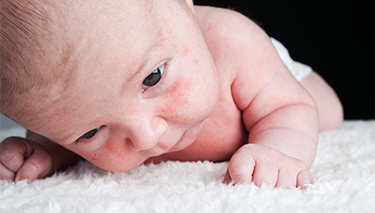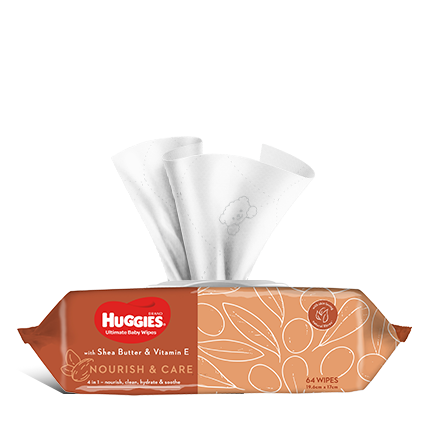If your baby has flaky, dry skin on their scalp that looks like dandruff and has patches of yellow crusts, it may be cradle cap. Don t fret though, it is very common.
Find out about the causes, symptoms and treatment of cradle cap so you can help care for your baby's skin.
What is cradle cap?
Cradle cap is a type of seborrhoeic dermatitis that affects babies on their face and scalp. It is an inflammatory skin condition that is not contagious. It usually occurs in the first three months of life and is rare after your baby’s first year.
What causes cradle cap?
The exact cause of cradle cap is not known, but we do know that it is not caused by bad parenting or poor hygiene.
The sebaceous glands in the scalp that are activated by mum's hormones secrete sebum which then oils the skin. The excess sebum and oil on the scalp prevents natural shedding of the skin. This leads to a build up of this mixture which then forms a crust over the baby’s scalp.
Once a baby is about three months, the sebaceous glands usually become inactive until puberty.
What are the symptoms of cradle cap?
Symptoms of cradle cap include:
- Greasy scalp
- Yellow crusts
- Scaled or flaky skin on the scalp
- Redness on the skin
- Looks like a bad case of dandruff
How can I treat my baby's cradle cap?
Cradle cap usually goes away by itself within a few months, but some parents prefer to remove it because of its appearance.
Here's the best way to remove cradle cap:
- Gently massage baby’s scalp with your fingertips or soft brush to loosen the crusts.
- Apply a pure natural oil (such as olive oil) or baby oil to help soften the scales. Remember to wash it off after an hour as the extra oil can clog the pores and cause more flakes. Gently brush them off after gently patting dry.
- Use special baby shampoos that are developed to treat cradle cap
Cradle cap may make a reappearance after treatment since the glands are still producing too much oil. If cradle cap persists after bub is three months old, the flaky skin may indicate baby eczema and require different treatment.
Should I take my baby to see a doctor?
You should consult with your doctor or early childhood nurse should you have any concerns on your baby’s skin health.
Seek medical advice if:
- The cradle cap does not improve after two weeks, despite following the above treatment
- The rash seems to be causing itching or discomfort to your baby
- The cradle cap spreads to other areas of the body
- The skin under the crusts become infected and makes your baby become unwell
For more information about baby skin care, read baby skin care tips.
Last Published* May, 2024
*Please note that the published date may not be the same as the date that the content was created and that information above may have changed since.




















